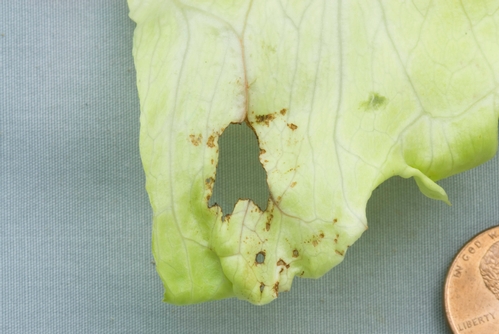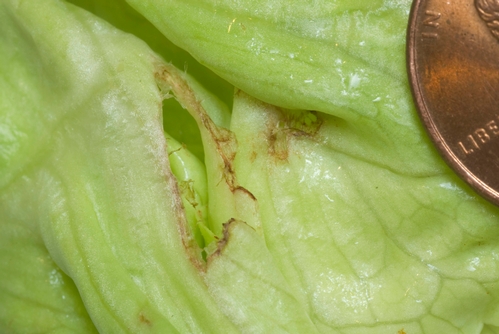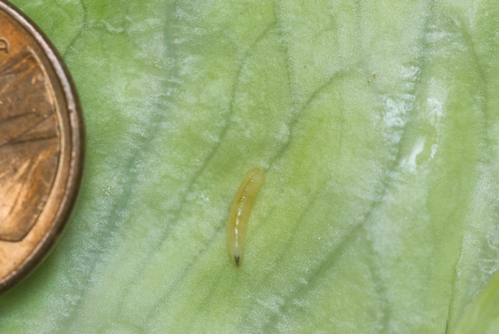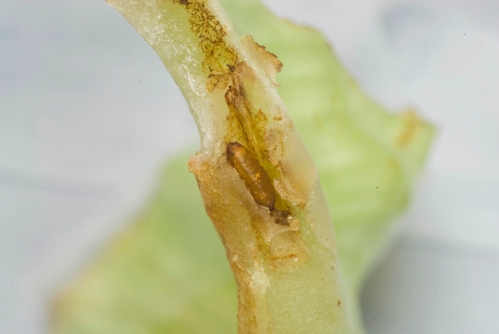The spring growing conditions have been responsible for several problems that affected head lettuce in coastal California. Rain and cold temperatures have allowed significant development of bacterial leaf spot (Xanthomonas campestris pv. vitians) and a physiological disorder possibly related to tipburn. In addition, recent samples, received by UC Cooperative Extension, have been infested by an insect. Field personnel and pest control advisors have also been detecting this problem.
Underneath the wrapper leaves, inner layers are being fed upon by the larval stage (maggot) of a fly insect. Damage consists of holes and breaks in the leaves where the maggot has been feeding (photos 1, 2, 3).
|
Photo 1 |

|
Photo 2 |

|
Photo 3 |

Edges of the damaged areas turn tan to brown. Such feeding damage can occur anywhere along the leaf and midrib tissue. Careful examination of the inner leaves will likely reveal the presence of the maggot (photo 4) and/or the pupa (photo 5). Maggots are small (approximately 7 mm (1/10th inch) long) and pale in color.
|
Photo 4 |

|
Photo 5 |

The insect damage, which consists of actual holes in the tissue, is distinct from the physiological problem that typically does not result in breaks in the leaf and which is usually restricted to the leaf margins. The bacterial leaf spot disease affects mostly outer leaves and results in characteristically black lesions.
Identification of the fly is pending and Entomology Farm Advisor Jianlong Bi will be investigating this further.